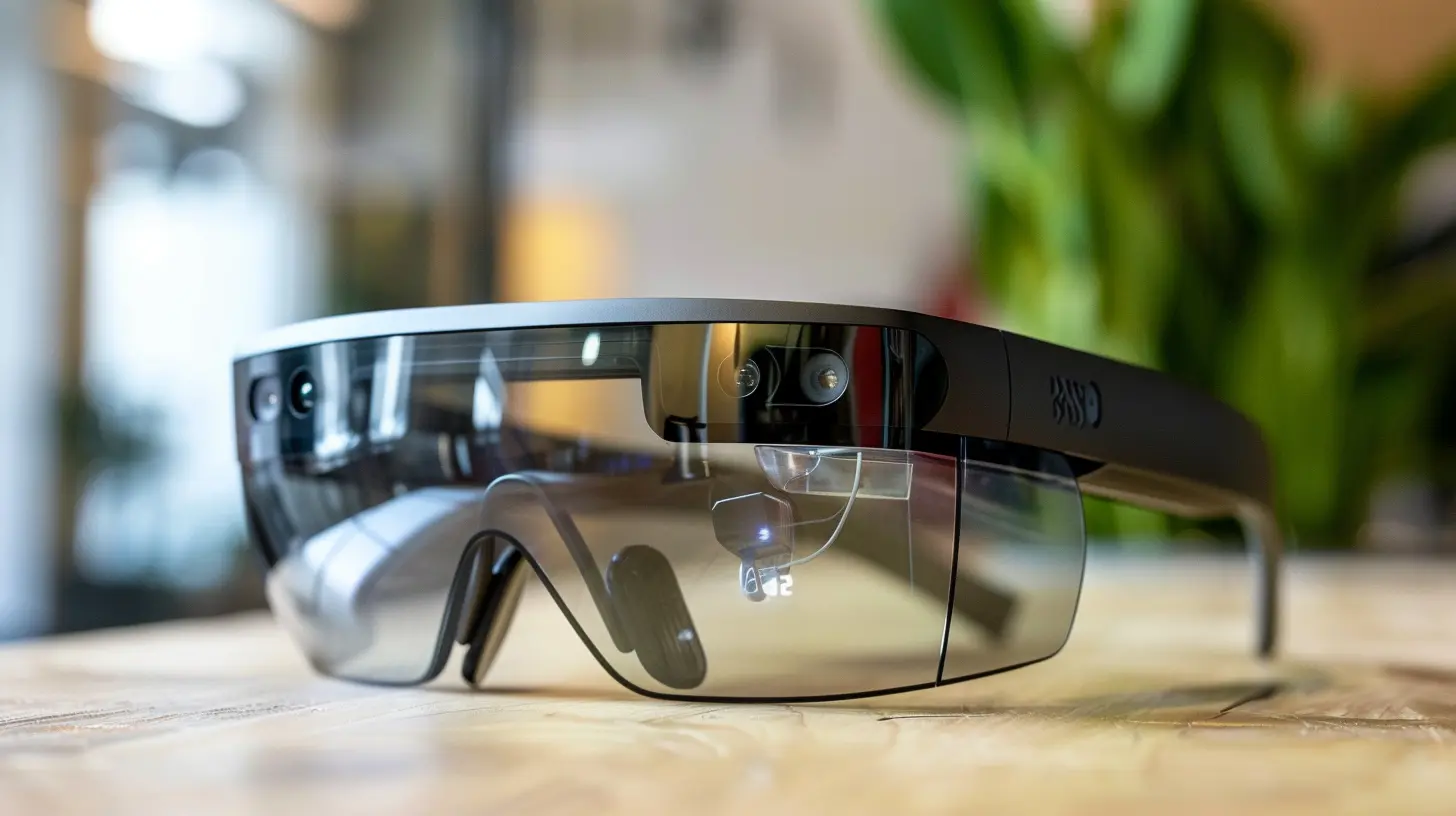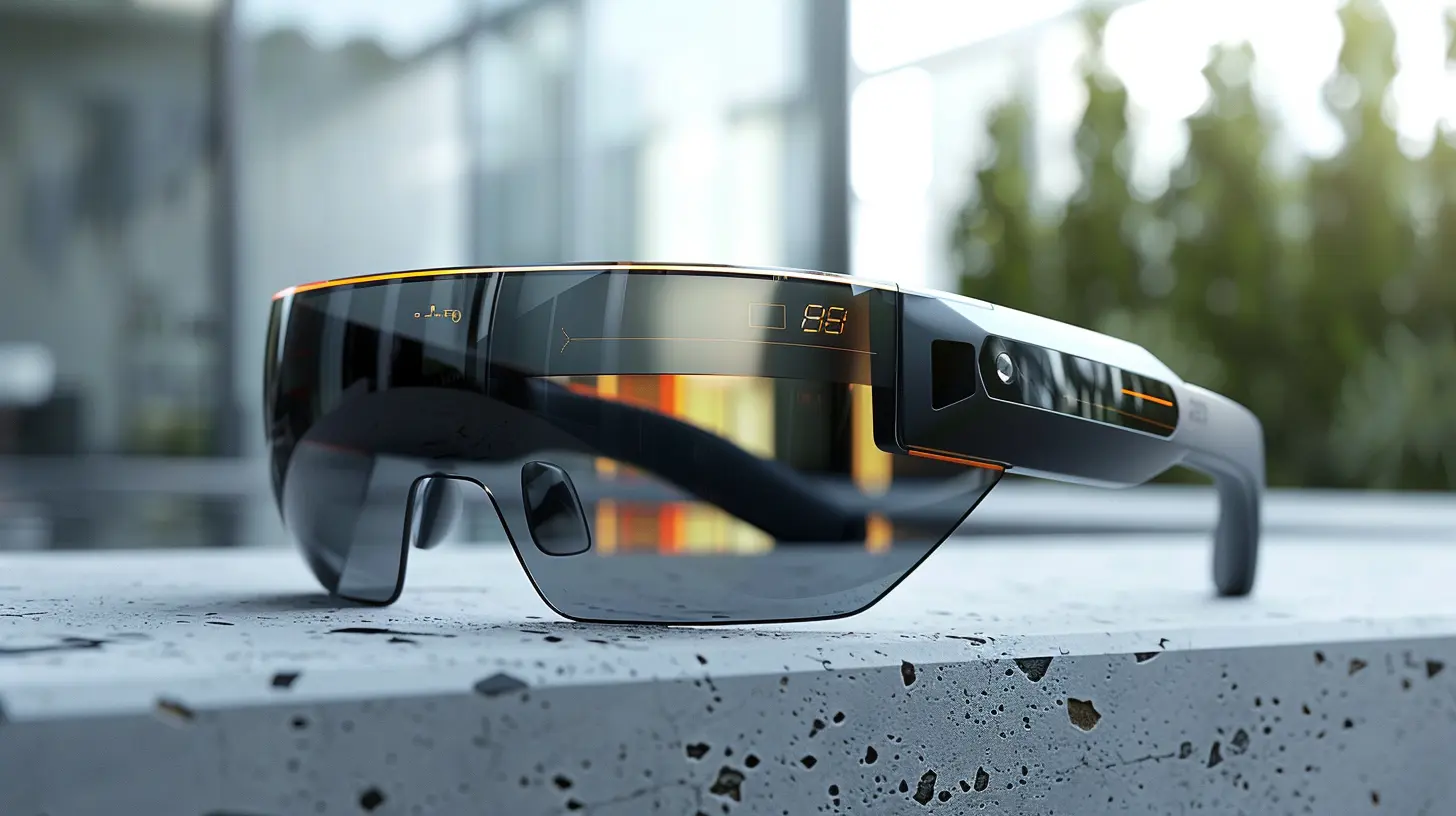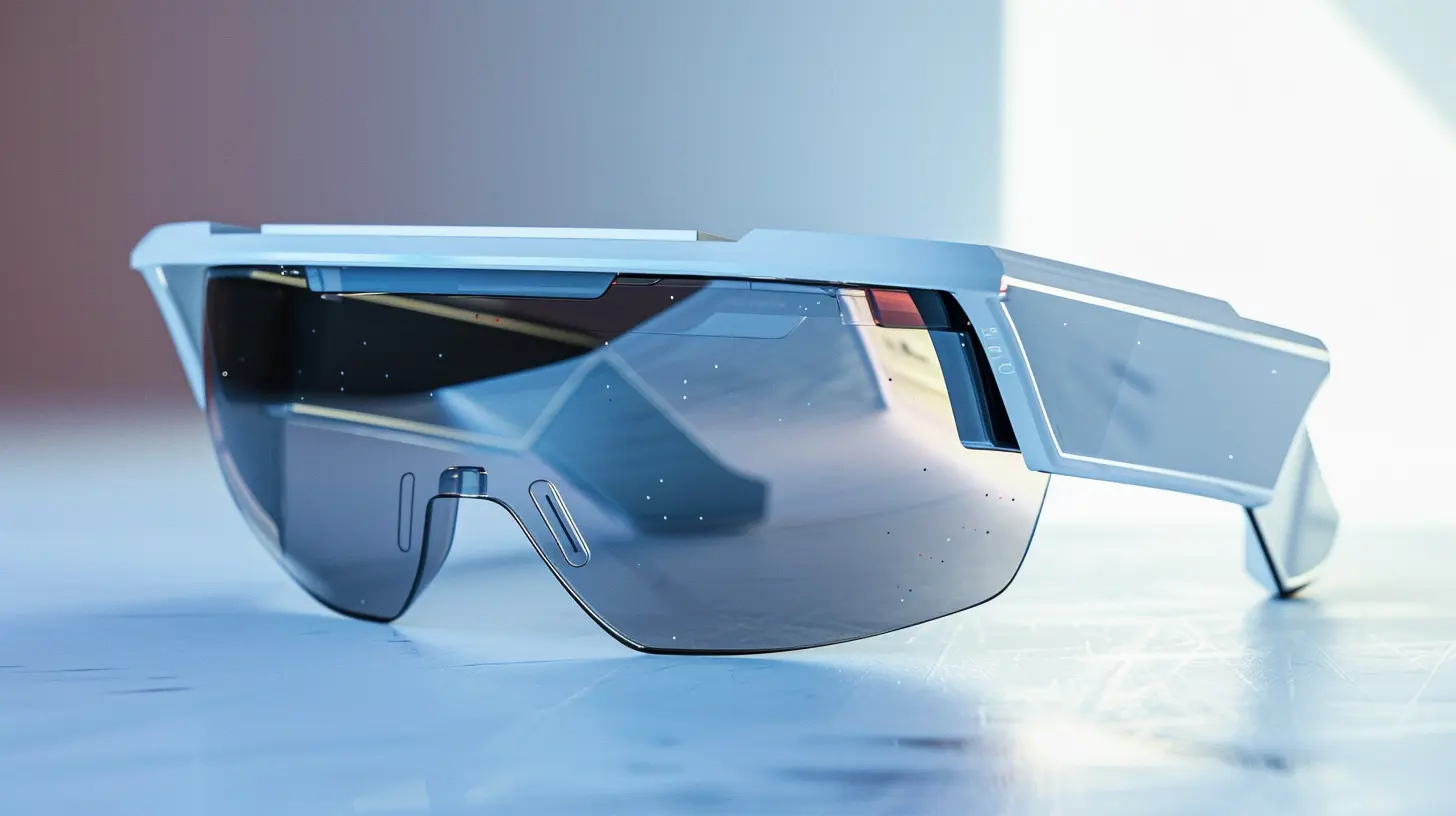AR Glasses and the Future of Communication
10 May 2025
In a world where technology continuously reshapes how we interact, Augmented Reality (AR) glasses are gearing up to be the next big disruptor. Remember those sci-fi movies where characters interact with floating screens or holograms? Well, that future might not be as far-fetched as you think. AR glasses are about to change the game, especially in how we communicate with one another. But how exactly do they work? And what does it mean for the future of communication?
Let’s dive into the world of AR glasses and see how they could revolutionize our daily interactions, from casual conversations to business meetings.

What Are AR Glasses?
First things first—what exactly are AR glasses? In simple terms, AR glasses are wearable devices that overlay digital content onto the real world in real-time. Imagine walking down the street, and instead of pulling out your phone to check the weather, it’s displayed directly in front of your eyes. Or perhaps you're in a meeting, and instead of staring at a PowerPoint presentation, the information is projected right in front of you, floating in mid-air.These glasses use a combination of sensors, cameras, and displays to blend virtual elements with the physical world seamlessly. And the best part? They can do all this without taking you out of the moment. Unlike VR (virtual reality), which immerses you in an entirely digital environment, AR enhances what’s already around you.

The Evolution of AR Glasses
Believe it or not, AR glasses have been in development for quite some time. Remember Google Glass? Back in 2013, Google introduced a pair of smart glasses designed to bring augmented reality to the masses. Though it didn’t take off as expected, it sparked a wave of innovation in the AR space.Fast forward to today, and we’re seeing significant advancements from tech giants like Microsoft, Apple, and Facebook (now Meta). With devices like Microsoft’s HoloLens and rumors swirling around Apple’s AR glasses, it’s clear that AR isn’t just a fad—it’s a technological shift that’s here to stay.
But enough about history. Let’s get into the juicy part: how AR glasses are transforming communication.

How AR Glasses Will Change Communication
1. Redefining Face-to-Face Interaction
Imagine being able to talk to someone miles away and yet feel like they’re standing right next to you. AR glasses could make this a reality. Thanks to holographic projections, people could appear in your physical space as lifelike avatars. It’s like FaceTime on steroids!You’d no longer be limited to flat screens or 2D video calls. AR glasses could allow you to have conversations where gestures, eye contact, and even body language play a role—all without actually being in the same room. This could redefine how we experience long-distance communication, making it more immersive and personal.
2. Breaking Down Language Barriers
Let’s face it—language barriers can be a real pain, especially in our increasingly globalized world. But what if AR glasses could translate languages in real-time? With built-in AI, AR glasses might soon be able to display translations of spoken conversations right in front of your eyes.Imagine sitting in a meeting with someone who speaks a different language, and instead of relying on a translator or struggling through the conversation, subtitles appear on your lenses, translating everything in real-time. This could open the door to seamless global communication, no matter where you are or what language you speak.
3. Augmenting Business Meetings and Presentations
Business meetings could become a lot more dynamic with AR glasses. Instead of staring at a projector screen or a laptop, participants could view 3D models, charts, and data visualizations floating right in front of them. Imagine presenting a new product prototype where everyone at the meeting can interact with a digital 3D model, zooming in and examining it from all angles, without even touching it.Collaboration would also be taken to the next level. Instead of having to rely on shared screens or presentations, AR glasses could allow teams to work on virtual whiteboards, brainstorm ideas in real-time, and share notes—all without needing physical tools or devices.
4. Revolutionizing Social Media Interaction
Social media as we know it could be turned on its head. Instead of scrolling through a feed on your smartphone, AR glasses could display posts, likes, and comments directly in your field of vision. You could interact with virtual versions of your friends, view their updates in your physical space, and even attend virtual social events—all through AR.This could make social media more engaging, immersive, and, dare I say, addictive. Just imagine walking down the street and seeing floating notifications of your friends’ latest activities or even bumping into their holographic avatars for a quick catch-up. It’s a whole new level of connectedness.
5. Boosting Productivity in Remote Work
Remote work has become the norm for many, but let’s be honest, it can sometimes feel disconnected. AR glasses could bridge that gap by creating a virtual office environment where you can interact with your colleagues as if you were all in the same room.You could have virtual desks, shared workspaces, and even water-cooler chats—all through augmented reality. Need to collaborate on a project? No problem. With AR glasses, you could co-edit documents, brainstorm on virtual whiteboards, and even have face-to-face meetings without ever leaving your house.
6. Enhancing Education and Training
In the world of education and training, AR glasses could be a game-changer. Imagine attending a virtual lecture where the professor is a hologram standing in front of you, explaining complex concepts with 3D models that you can interact with.For training purposes, AR could simulate real-world scenarios. For example, medical students could practice surgeries in a virtual environment, or engineers could learn how to assemble machinery through augmented tutorials. This kind of immersive learning could make education more engaging, interactive, and effective.

Challenges Facing AR Glasses
Of course, no new technology comes without its fair share of challenges. While AR glasses have the potential to revolutionize communication, there are still some hurdles to overcome.1. Privacy Concerns
Let’s talk about the elephant in the room—privacy. With AR glasses, it’s possible that everything you see or hear could be recorded. This raises some serious questions about data security and surveillance. Would people be comfortable knowing that a conversation could potentially be stored or analyzed? How would companies ensure user privacy? These are issues that need to be addressed before AR glasses become mainstream.2. Acceptance and Adoption
We’ve already seen a glimpse of public resistance with Google Glass. People felt uncomfortable with the idea of being recorded without their consent. For AR glasses to succeed, there needs to be a cultural shift towards embracing this new form of technology.Plus, let’s not forget the fashion aspect. Smart glasses will need to strike a balance between functionality and style. After all, no one wants to walk around looking like a cyborg, right?
3. Battery Life and Performance
AR glasses will require a ton of processing power to overlay digital content in real-time. This means battery life could be a significant hurdle. There’s also the question of performance—how smoothly can these glasses function without lag or overheating? These are technical challenges that engineers are still working on.The Future: What’s Next for AR Glasses?
Despite the challenges, the future of AR glasses looks bright. As technology continues to advance, we can expect to see lighter, more powerful, and more stylish AR glasses hit the market. Companies like Apple, Meta, and Microsoft are investing heavily in AR, and it's only a matter of time before we start seeing these glasses integrated into our daily lives.In the future, it’s possible that AR glasses could replace our smartphones entirely. Instead of looking down at a screen, all our apps, messages, and notifications could be displayed right in front of our eyes. It’s a bold prediction, but not an impossible one.
And let’s not forget about the potential for AR glasses to integrate with other emerging technologies like artificial intelligence, 5G, and the Internet of Things (IoT). With these combined forces, we could see a world where communication becomes faster, more efficient, and more immersive than ever before.
Conclusion
AR glasses are more than just a cool gadget—they have the potential to reshape the way we communicate and interact with the world around us. From transforming business meetings to breaking down language barriers, AR glasses could make our interactions more immersive, engaging, and personal.Sure, there are still challenges to overcome, but the possibilities are endless. The future of communication is just around the corner, and it’s looking pretty exciting. The question is: are you ready to embrace it?
all images in this post were generated using AI tools
Category:
Ar GlassesAuthor:

Gabriel Sullivan
Discussion
rate this article
5 comments
Brooke Rogers
This article brilliantly explores the potential of AR glasses in transforming communication. Imagine seamlessly interacting with digital content while engaging with the physical world! I'm curious about how this technology will evolve and what new social norms might emerge as we integrate AR into our daily lives.
May 21, 2025 at 4:57 AM

Gabriel Sullivan
Thank you! I'm glad you enjoyed the article. The evolution of AR glasses will indeed reshape communication and social interactions, paving the way for new norms as we blend digital and physical worlds. Exciting times ahead!
Roman Fletcher
AR glasses could revolutionize communication by seamlessly blending digital information with the real world. However, widespread adoption depends on addressing privacy concerns and ensuring user-friendly design. The potential is immense, but challenges remain.
May 19, 2025 at 11:03 AM

Gabriel Sullivan
Absolutely! While AR glasses hold great promise for enhancing communication, prioritizing privacy and usability will be crucial for their successful integration into daily life.
Nyx Wilcox
AR glasses will revolutionize communication, blending digital interactions with the real world, enhancing collaboration, and redefining how we connect with others.
May 19, 2025 at 2:58 AM

Gabriel Sullivan
Absolutely! AR glasses have the potential to transform our interactions, making communication more immersive and seamless, and bridging the gap between the digital and physical worlds.
Zarev Klein
AR glasses could redefine how we connect! Imagine virtual meetings with no screens and immersive experiences. Can’t wait to see how this tech transforms our daily interactions!
May 16, 2025 at 12:42 PM

Gabriel Sullivan
Absolutely! AR glasses have the potential to revolutionize communication by creating more engaging and immersive interactions, making virtual meetings feel more personal and connected. Exciting times ahead!
Kian Perry
AR glasses have the potential to revolutionize communication, blending the digital and physical worlds. However, we must navigate privacy and accessibility challenges thoughtfully.
May 11, 2025 at 9:01 PM

Gabriel Sullivan
Thank you for your insight! Balancing innovation with privacy and accessibility is crucial as we explore the future of AR glasses in communication.




